If you’ve studied mushrooms at all, you know how bizarre they can be, but this species really takes it to another level. The Beefsteak mushroom (Fistulina hepatica) legitimately looks like a slab of meat. It isn’t just the outer appearance that is meat-like, either. When you cut it open, it is nicely marbled and bleeds a dull red juice all over the cutting board.
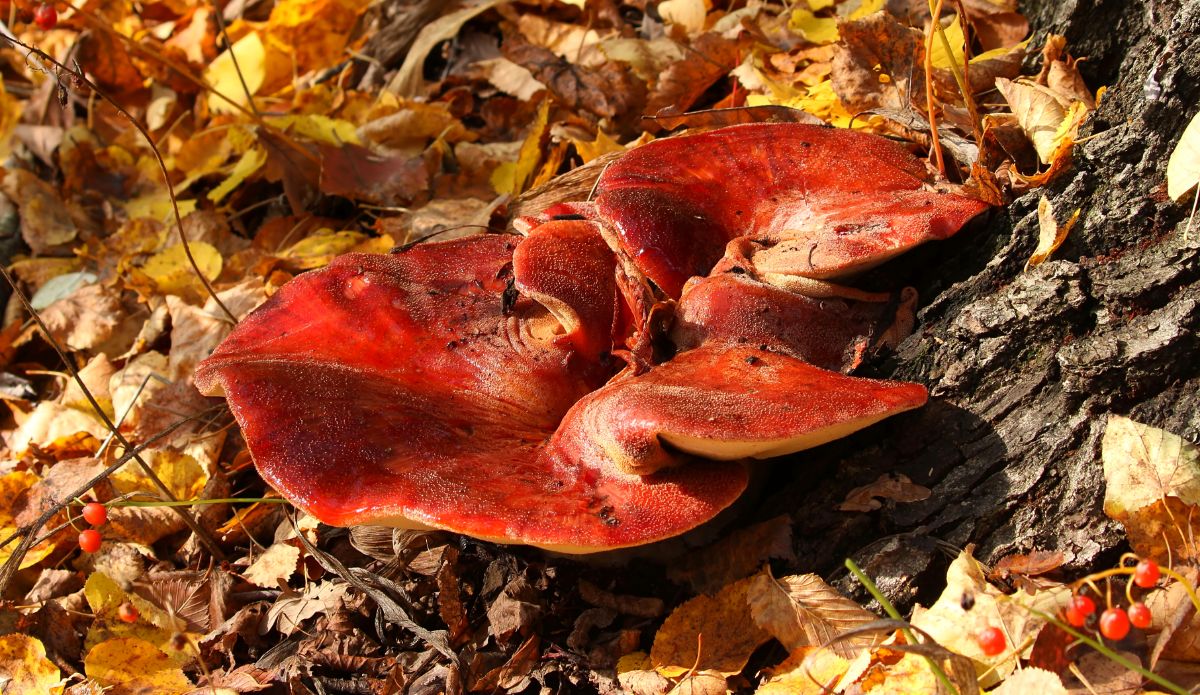
The beefsteak mushroom is considered a decent edible, even though it has a bit of a sour flavor and needs a long cook time. It has been used as a meat substitute in the past simply because its appearance and texture easily trick the mind.
The appearance of a freshly harvested Beefsteak mushroom is so eerily organ-like that you might want to keep it tucked away and say a few prayers to the traffic gods that you don’t get pulled over. They might think you’ve recently committed a murder or, for sure, some bloody atrocity.
If you like weird looking mushrooms, check out this delicious edible that looks like a Lobster!
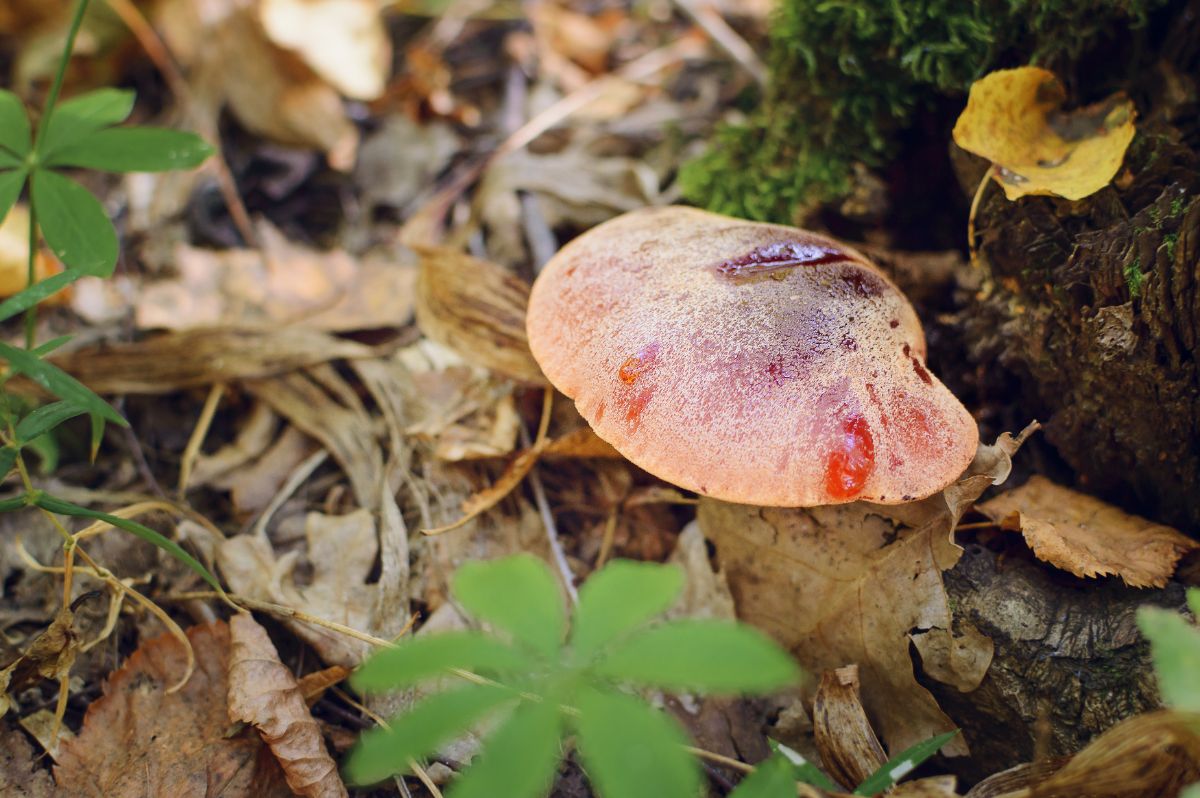
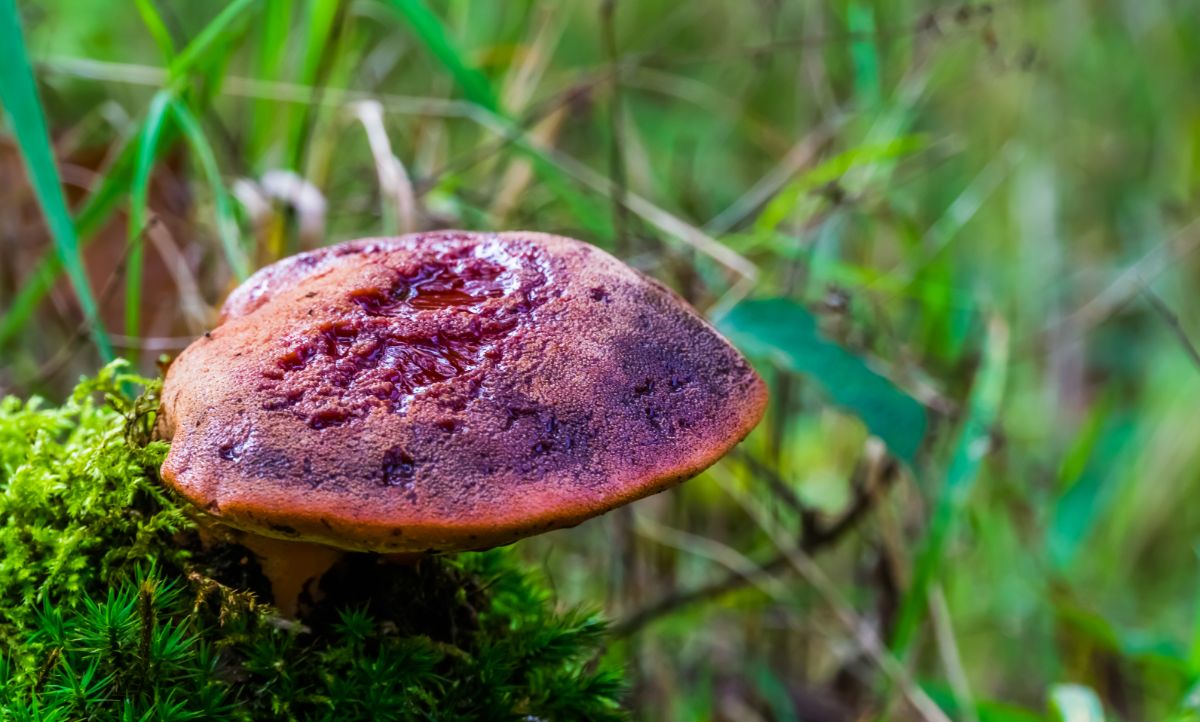
Jump to:
A Brief History of the Beefsteak Mushroom
The Beefsteak mushroom is a bracket-type fungus. This means it grows on the side of trees and doesn’t have gills or stems like a more traditional idea of a mushroom. It is a type of polypore with a firm, rigid appearance that looks like a shelf growing out of a tree.
Beefsteak mushrooms are weakly parasitic and cause brown rot on trees they infect. Mostly, though, they are found on already dead trees where they are saprophytes, decomposing dead organic material.
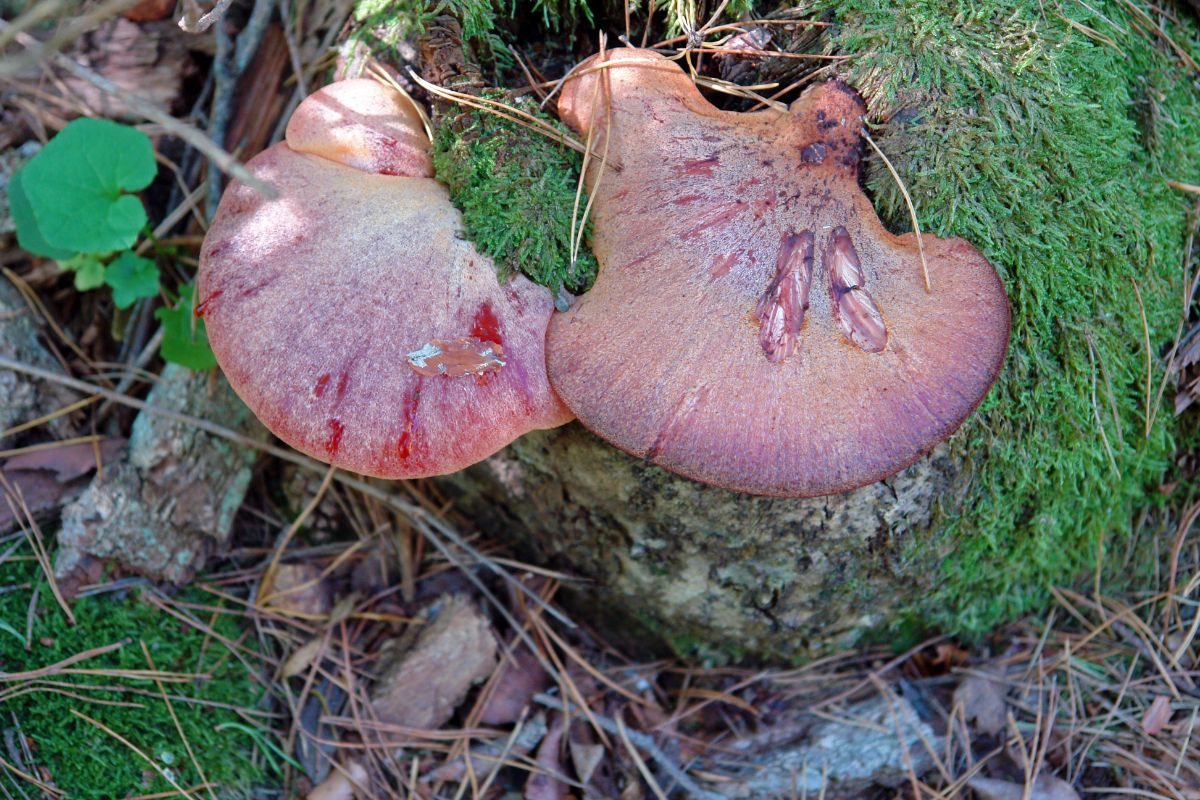
The overall look of the beefsteak mushroom is dense, tacky, deep burgundy red to bland brown, and large. The red liquid inside the mushroom will stain everything, so be aware of how you handle this and where. It looks like a giant pink strawberry growing on the tree when young and then transforms into a blood-red to brown liver-shaped growth.
This shelf fungus was first described to science in 1784 by Jacob Christian Schaeffer, an amateur German mycologist. It was given its present scientific name a few years later, in 1792, by the British botanist William Withering. The scientific name Fistulina means “small hollow tubes” (referring to the unique pore structure), and hepatica means “liver-like.”
These mushrooms are also known as Ox Tongue fungus, Poor Man’s Steak, Liver Fungus, or Tongue mushroom.
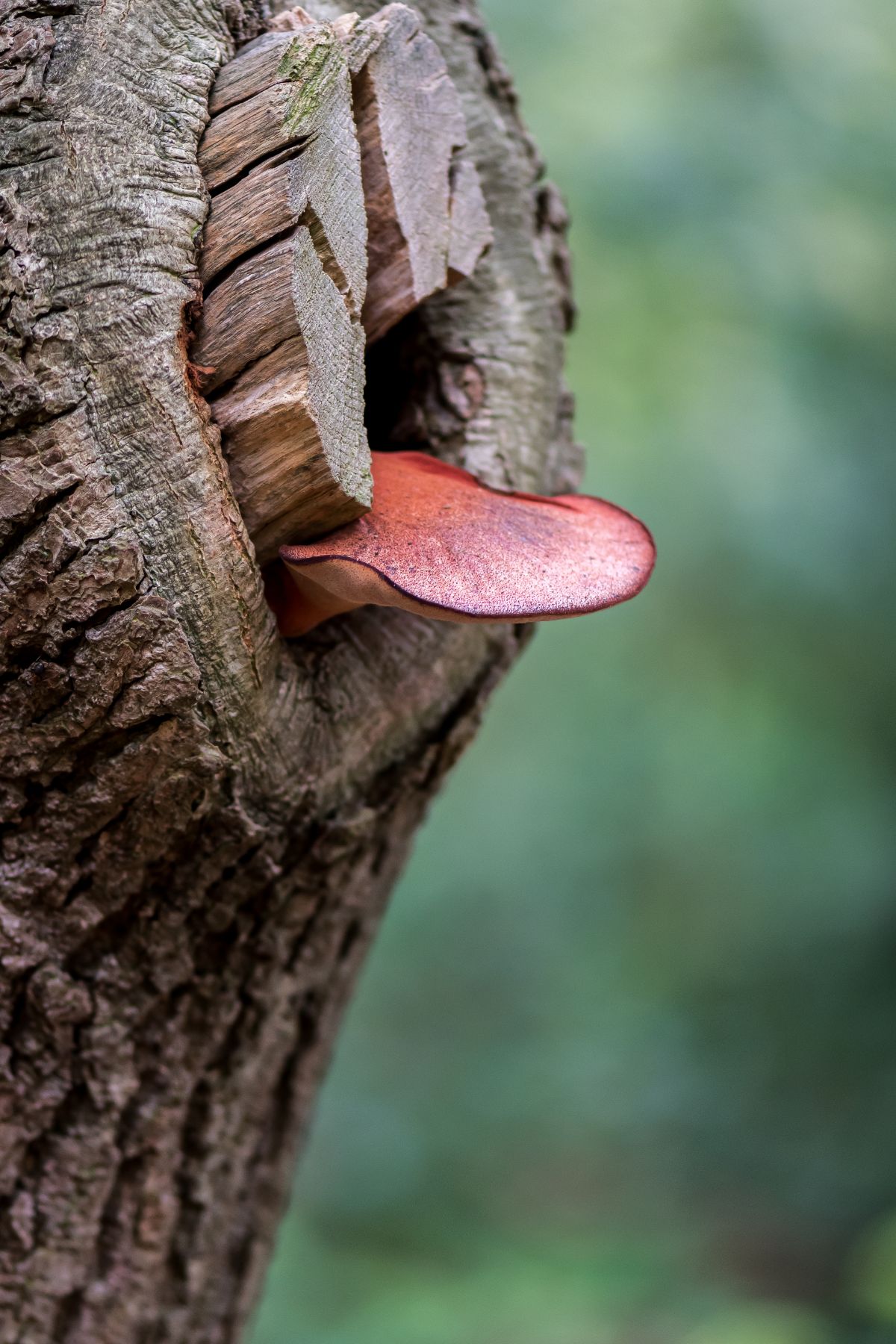
Fun Fact: The brown rot that this mushroom causes in oak trees is valued by woodworkers. The timber takes on a rich coloring known as “brown oak.”
Where do Beefsteak mushrooms grow?
The unusual beefsteak mushroom grows around the world, and most commonly in Britain. It is also found in Australia, Africa, Europe, and North America. In North America, they’re a bit uncommon. They’re more likely to be found east of the Rocky Mountains.
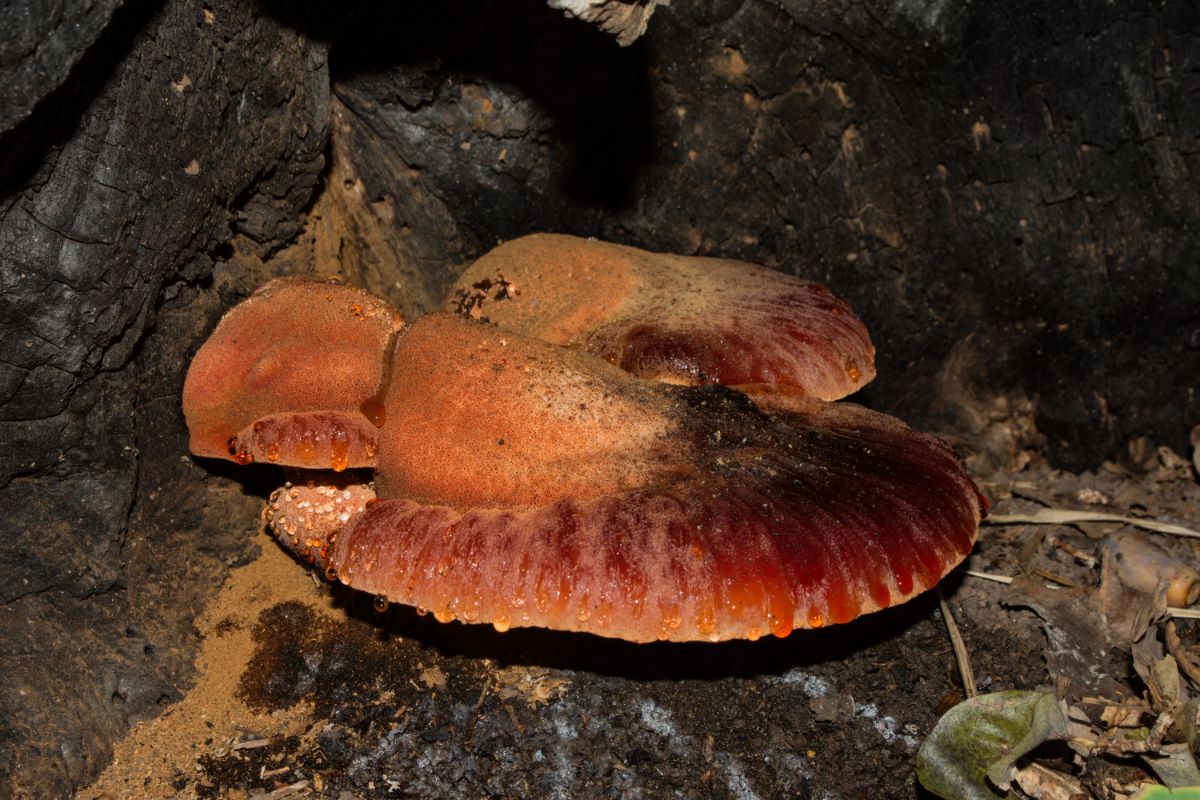
Are Beefsteak Mushrooms Edible?
Yes, Beefsteak mushrooms are edible and considered good by most who eat them. Some even say they are choice, but not everyone agrees with that assessment.
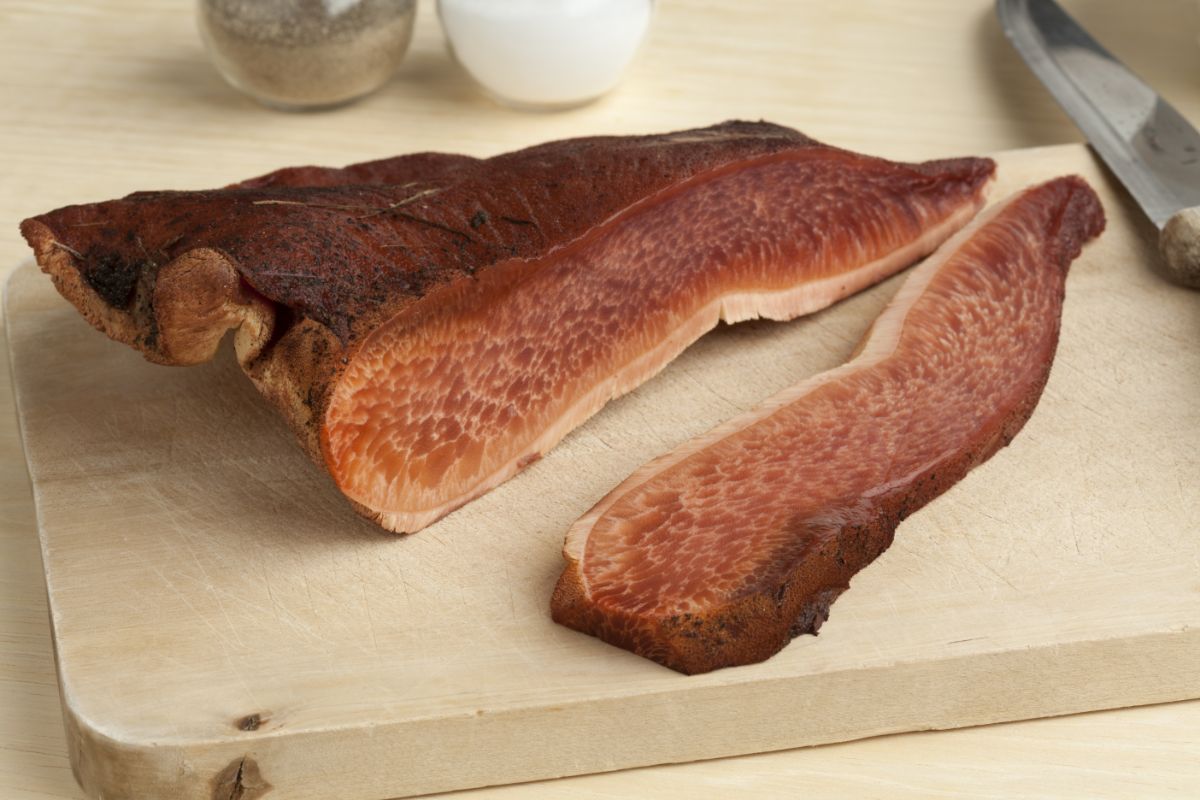
Beefsteak Mushroom Identification
Season
In North America, Beefsteak mushrooms are a late summer through early fall mushroom. They are most common in late summer.
Habitat
The parasitic Beefsteak mushroom grows on the side of oak trees, usually around the base of the tree or stump. However, they don’t exclusively grow at the base and can be found further up the tree.
This mushroom is also known to grow on sweet chestnut trees, although oak is the primary species. They’ll often emerge from roots or broken stumps of dead trees. It is most common on recently dead trees, so the best place to look is on the bases of dead but still-standing trees.
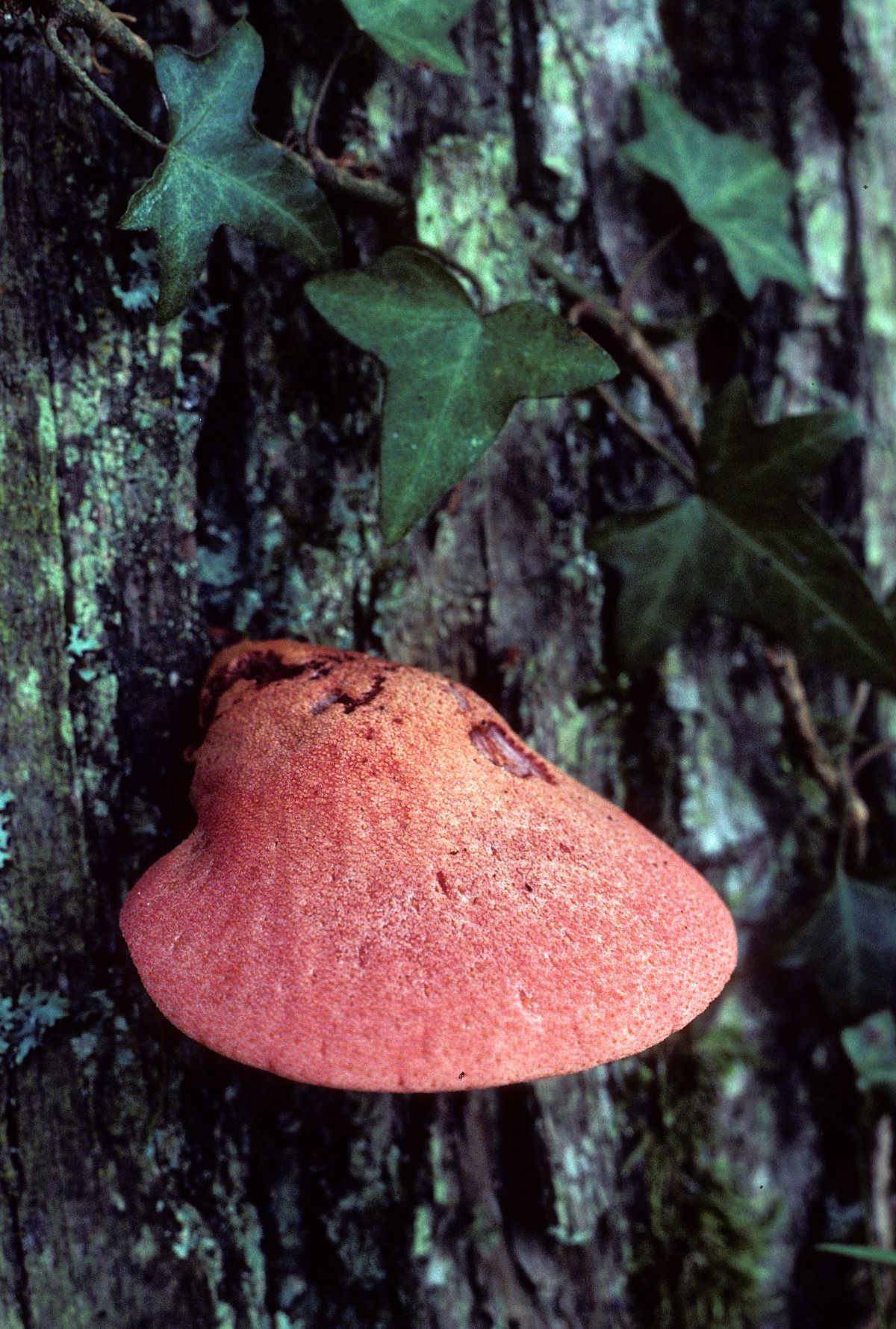
Identification
The bracket-shaped cap is between 3-12 inches wide and .75-2.25 inches thick. It is shaped like a semi-circle or a tongue. The color is bright pinkish-red to reddish-brown to dull brown (kind of like how liver, the meat, turns brown with age). When young, the cap is more strawberry-colored. The edge of the cap is also inflated when young, but it flattens out with maturity.
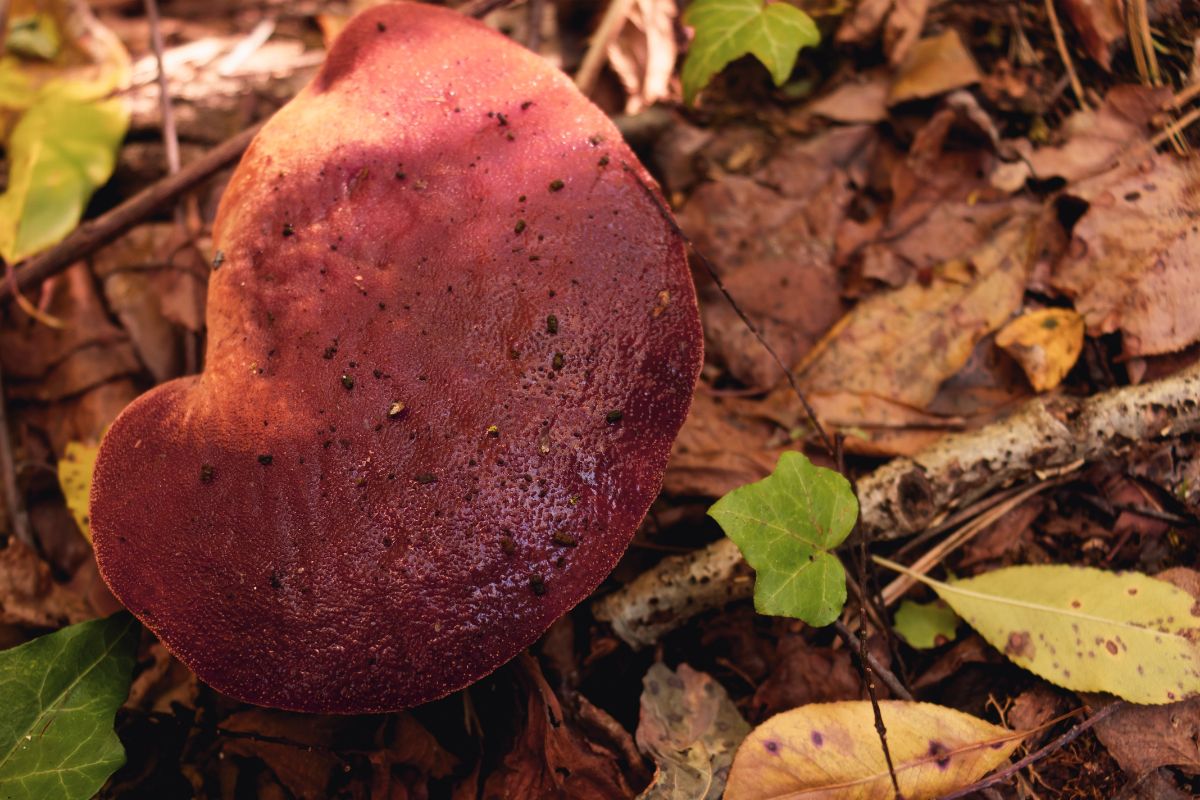
Underneath the cap, the pores are creamy white. They change from white to yellowish to reddish-brown as the mushroom ages. The pores also bruise deeply reddish-brown. Beefsteak mushroom pores separate easily from the upper cap portion, which is a rare feature for polypores. In other bracket mushrooms, the pores are fused together.
Beefsteak mushrooms attach to the host tree from a singular point from which they grow outwards. Sometimes, multiple mushrooms will grow from the same tree or even from the same point. In these cases, the bracket shelves may overlap or become distorted as they vie for space.
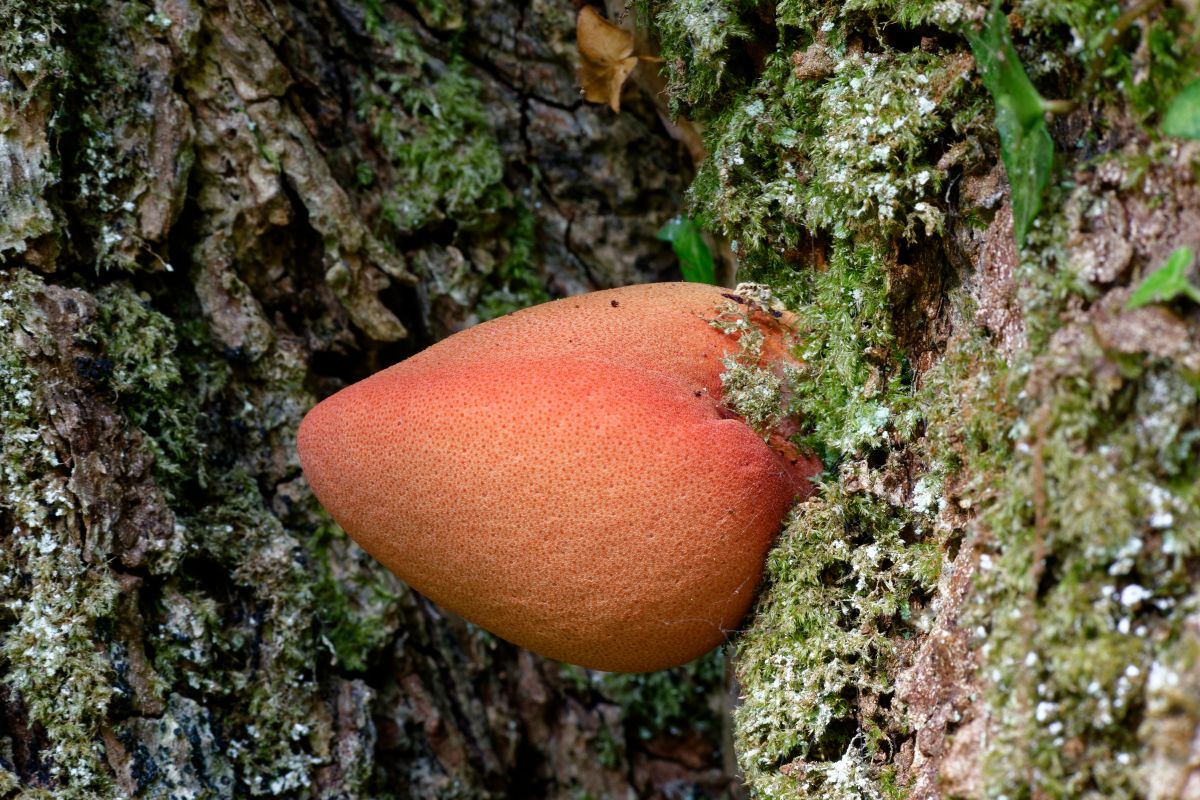
Usually, the fungus doesn’t have a stem; it just emerges from the side of the stump or tree. However, in cases where it must grow upwards, it will develop a short, thick stem. In this way, it is similar to reishi which will develop a very long stem when necessary but usually doesn’t need to.
The flesh of the Beefsteak mushroom is soft, fleshy, and watery. When cut or damaged, it bleeds a thin red juice. The interior of the mushroom is whitish but streaked with red, so it looks like the marbling on a slab of meat.
On The Lookout
Look around recently dead oak and sweet chestnut trees in late summer and fall for a chance of finding this unique fungus. There is no tried and true hunting technique – finding it is more about luck and looking in the right place. Train those mushroom eyes well, and you won’t miss it if it’s out there. It’s not a mushroom that is predictable or known to reappear every year.
Usually, there will be just one mushroom on a tree. It doesn’t fruit in large numbers in the same spot.
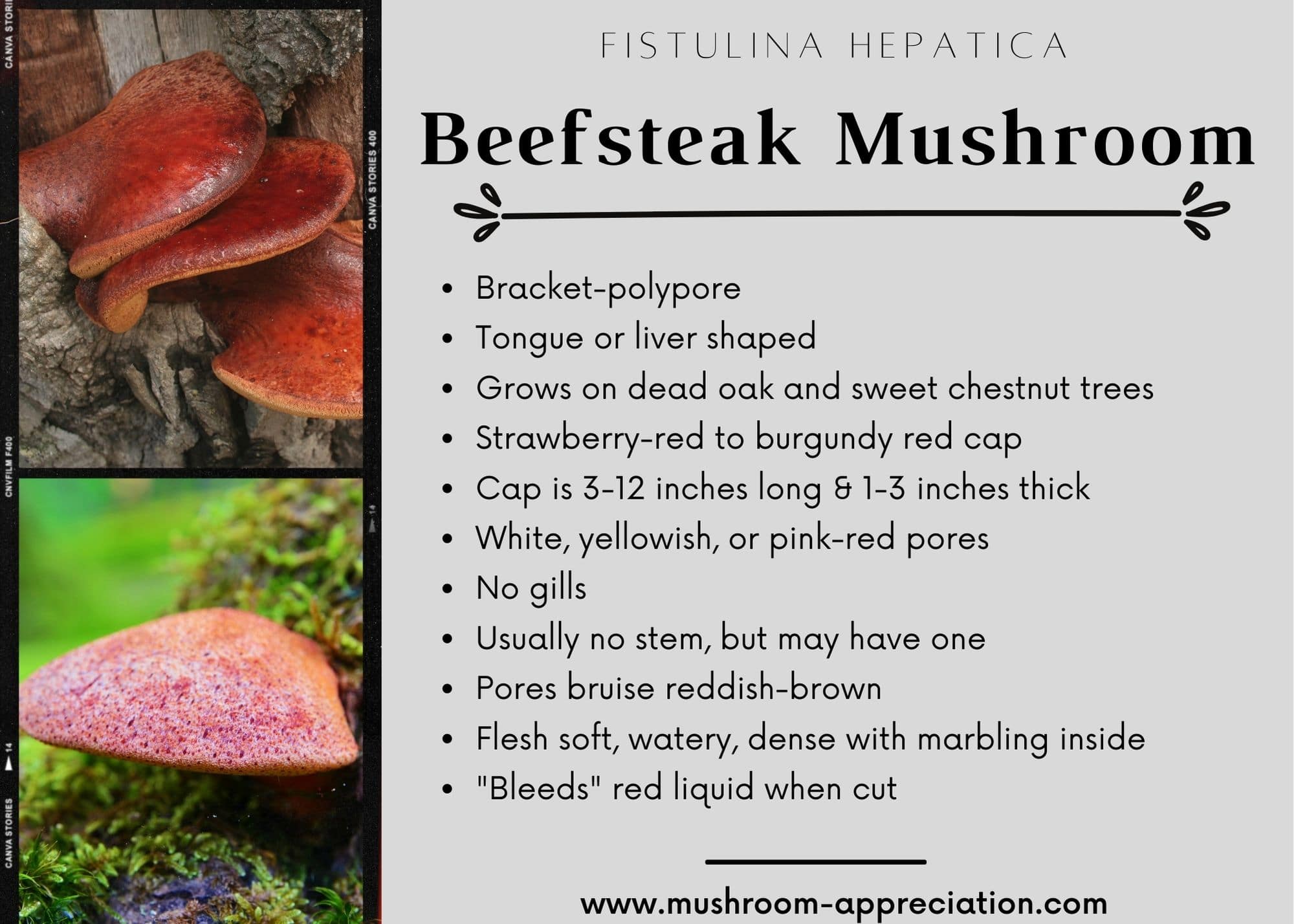
Foraging Beefsteak Mushrooms
These edible mushrooms must be collected when young for the best texture and flavor. They get tough as they mature, and a very old one might need a long cooking time to make it palatable. Usually, it’s not worth the effort past a certain stage.
Thankfully, you rarely have to worry about bugs getting into these mushrooms. It seems the sour taste is not appreciated by the local insects, and they mostly avoid it. This is good for the forager and a welcome change from most other mushroom foraging, where you compete directly with all the slugs, beetles, and flies.
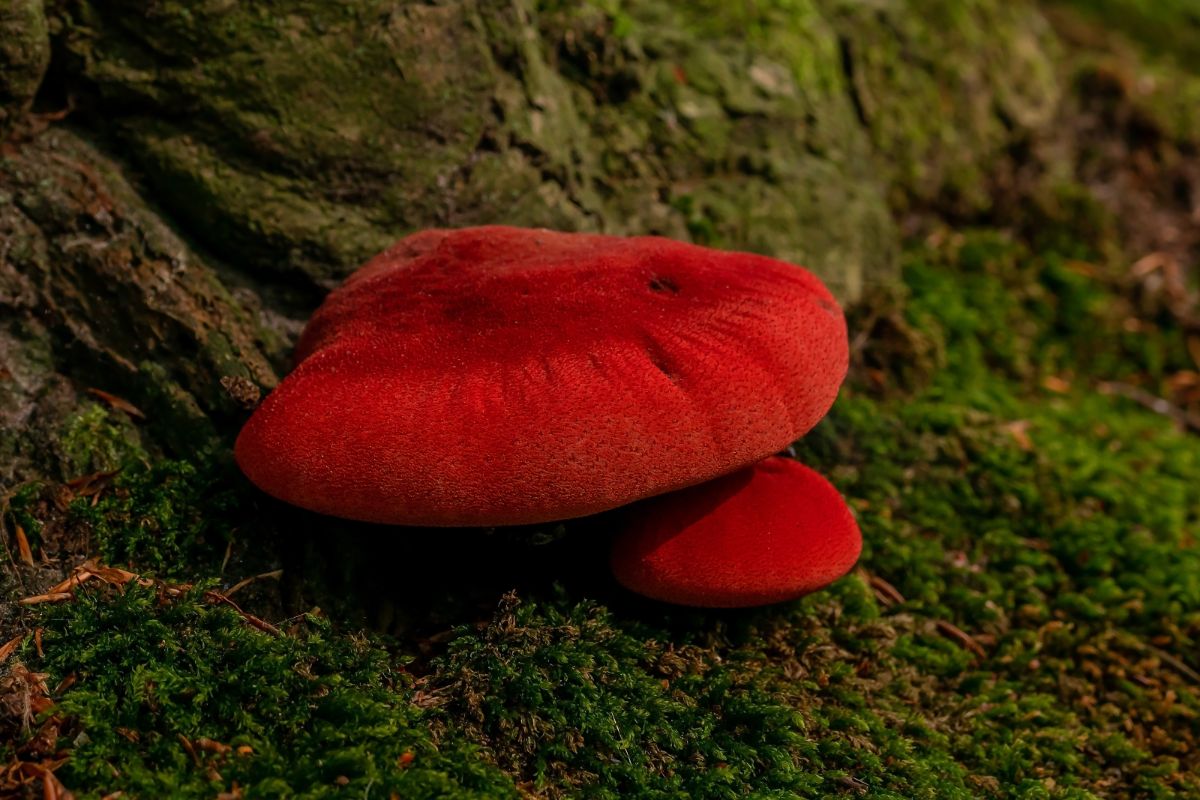
Beefsteak Mushroom Lookalikes
There aren’t many mushrooms that look like the Beefsteak mushroom upon close inspection. At a glance, some may mistake another shelf fungus with this one, but the similarities are mostly superficial. The main species that gets confused with the Beefsteak is Inonotus polypores (the same genus as Chaga, but Chaga is easy to tell apart).
Inonotus shelf polypores are thick, exude clear or reddish liquid, and grow from dead or dying trees. They are usually brown or tan colored, sometimes with a reddish tinge but never as brightly colored as the Beefsteak mushroom.
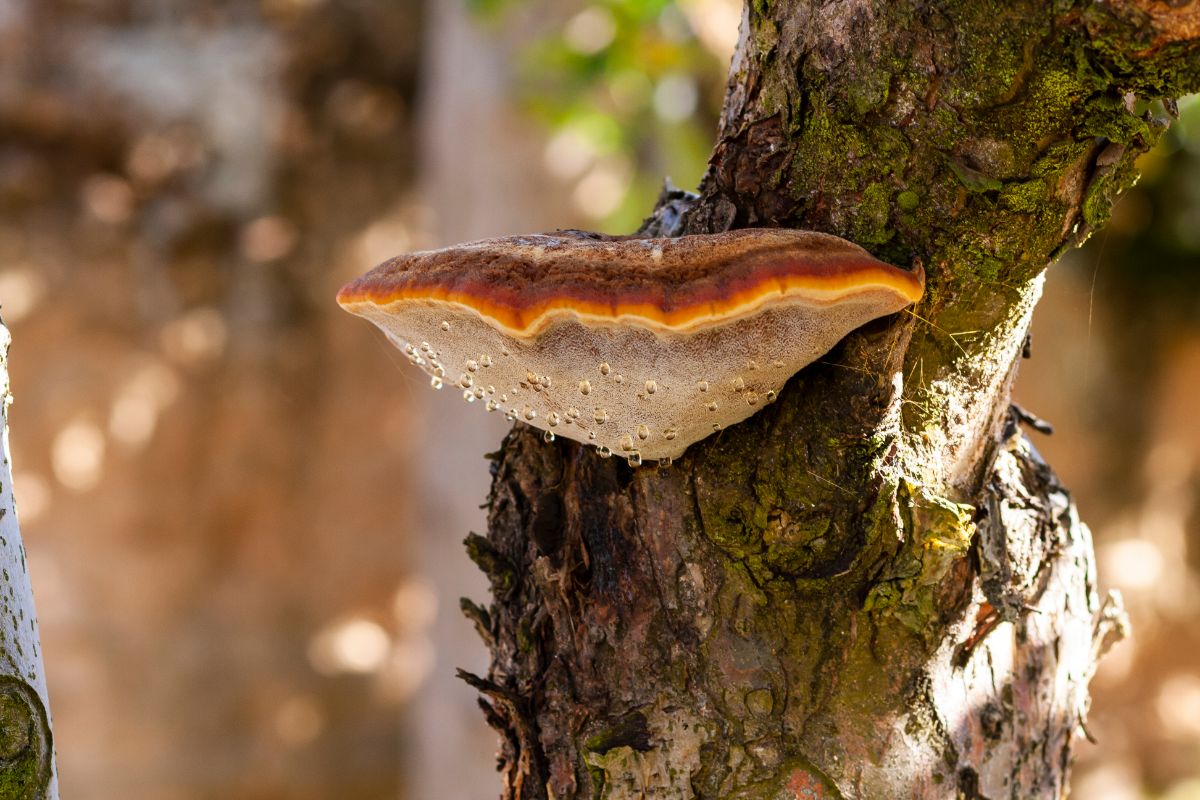
Beefsteak Mushroom Preparation, Cooking, and Recipes
The texture of this mushroom retains its meat likeness, but the flavor is not at all like a steak or even chicken. It is tender with a bit of chew, depending on the age of the specimen. The flesh of the foraged species should be easy to cut with a knife. If it is difficult to cut, the specimen is probably past the eating stage.
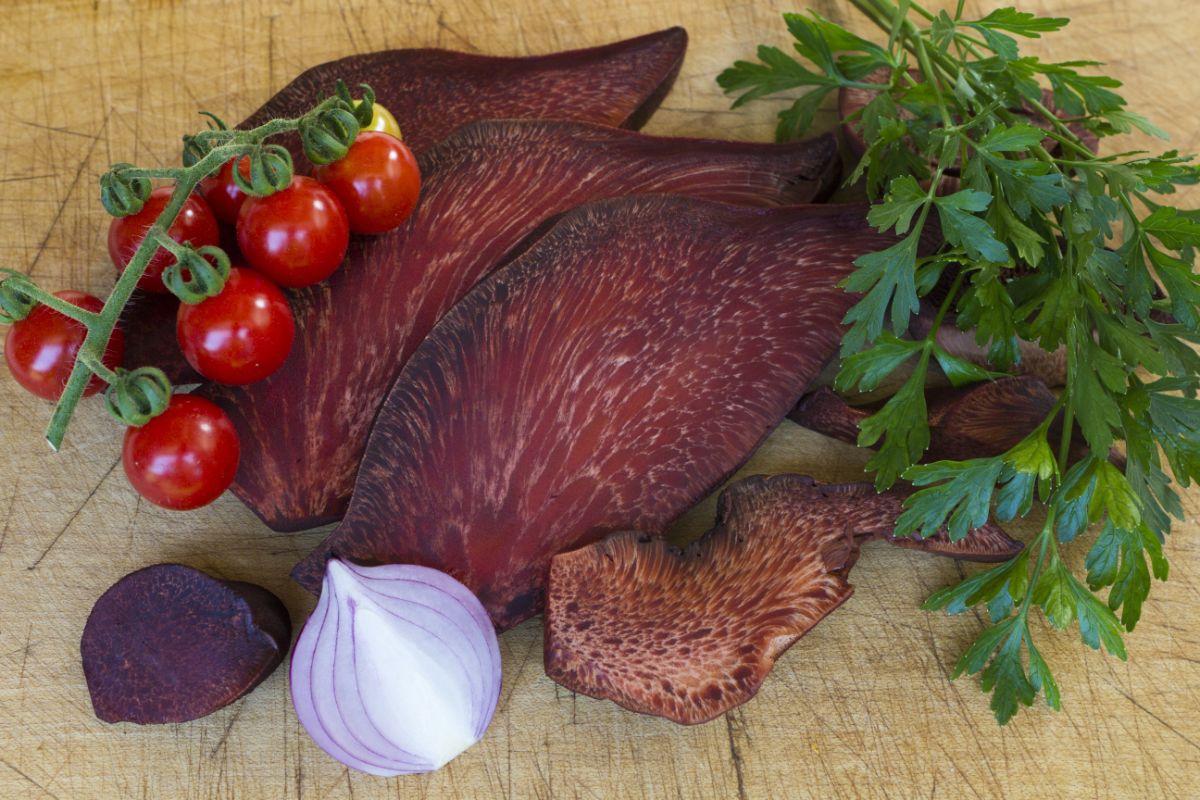
The flavor of young Beefsteak mushrooms is a bit sour, but not like lemon puckering sour – it’s more like a slightly tangy taste. However, this does vary a bit between specimens and probably habitat and time of the season. Some people report it being too sour, while others wish it had more tartness. Taste buds are funny things and are by no means standardized.
Some people eat them raw and say that is the only and best way to truly enjoy Beefsteak mushrooms. This may be true, but we never recommend eating wild mushrooms raw as they can seriously upset your digestive system. If you do so, it is at your own risk, and don’t be surprised at any gastric distress.
Beefsteak mushrooms hold a lot of water, which, combined with the tangy taste, may result in an unremarkable first impression. Seasoning, at least with salt and pepper, is a must. It’s also best to dry saute first to remove the liquid and then add the seasonings, oil, and butter. Otherwise, the whole thing might get soggy and insipid.
Preparation and Cooking Ideas
- Sliced thin and lightly seared or grilled
- Light stirfry with noodles and vegetables (mushroom added towards the end)
- Thin slices seasoned and fried like bacon
- Marinated and made into jerky
- Chopped and sauteed with butter and salt
- Hibachi style
Beefsteak Mushroom Recipes
- Beefsteak mushroom with lentils
- Butter-Boiled Beefsteak Mushroom
- Herb Crusted Beefsteak Mushroom
- Beefsteak Mushroom Stroganoff
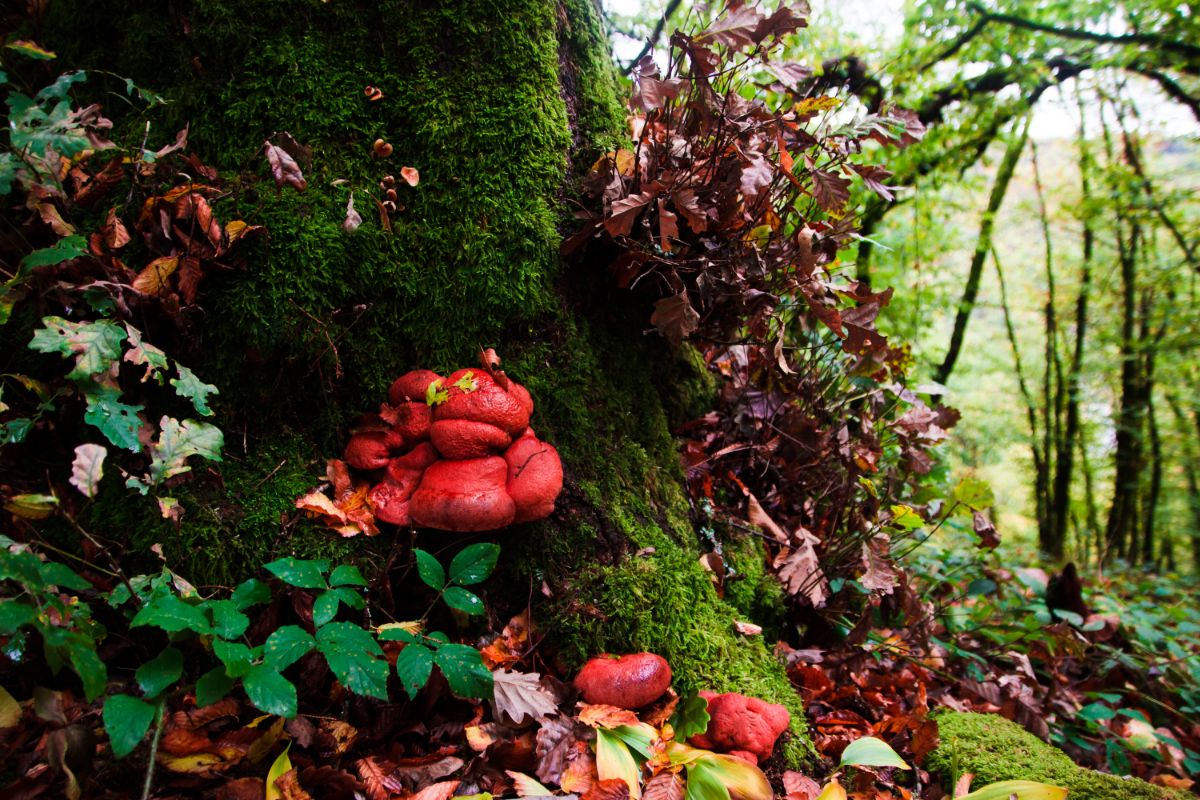
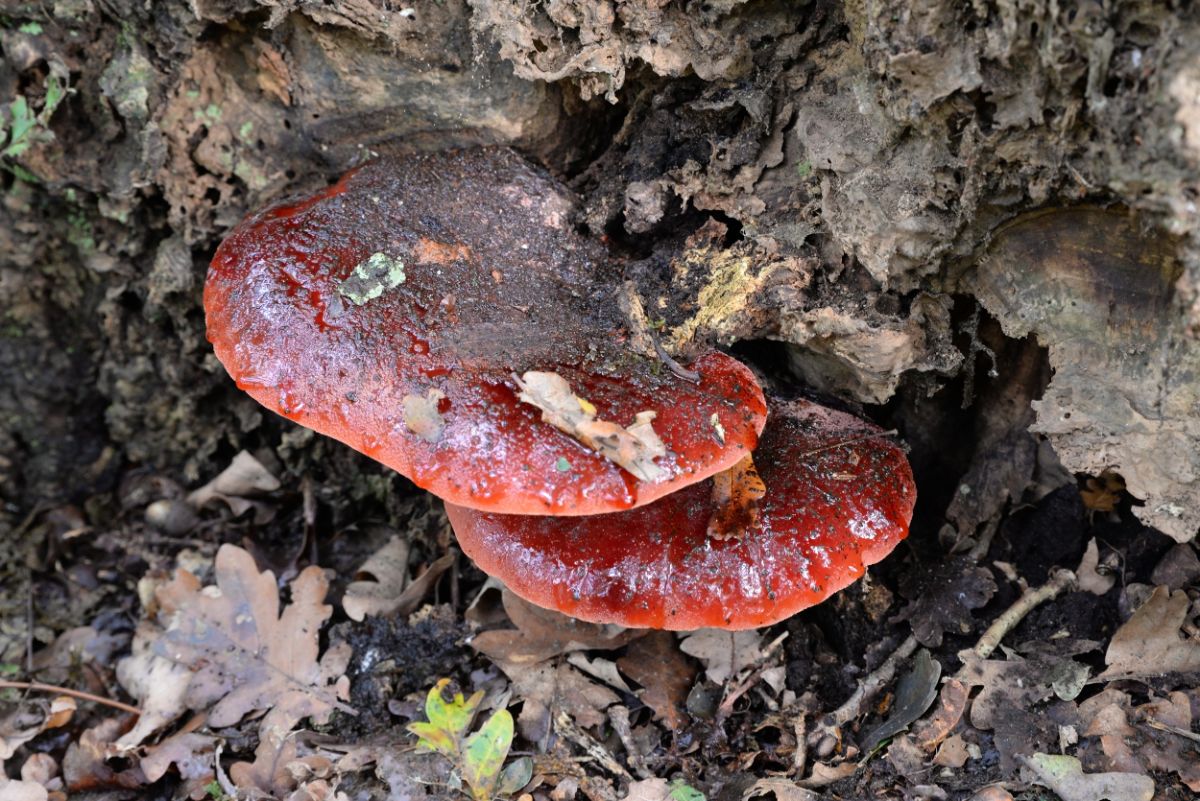
Beefsteak Mushroom Common Questions
Is there another type of beefsteak mushrooms?
One of the problems with common names is a single name can become common for two or more types of mushrooms. Some people call one of the false morels, Gyromitra esculenta, the beefsteak because it is a large, meaty looking mushroom.
The Gyromitra is extremely different in appearance than Fistulina hepatica — it is brown and brain-shaped with a white stem. It grows on the forest floor in spring and summer. There is no way to confuse it with this beefsteak mushroom.
Is the beefsteak mushroom poisonous?
No. Fistulina hepatica is considered a good edible, even choice for some people. The other mushroom with the beefsteak name, Gyromitra esculenta, will make you sick if not prepared properly. The Gyromitra contains toxins that can be removed with proper cooking but it isn’t recommended to eat them unless you’re very experienced with the process and mushroom.
Do beefsteak mushrooms taste like beef?
No, not even a little bit. The only thing beef-like is the appearance. These mushrooms taste slightly tangy and mushroomy.
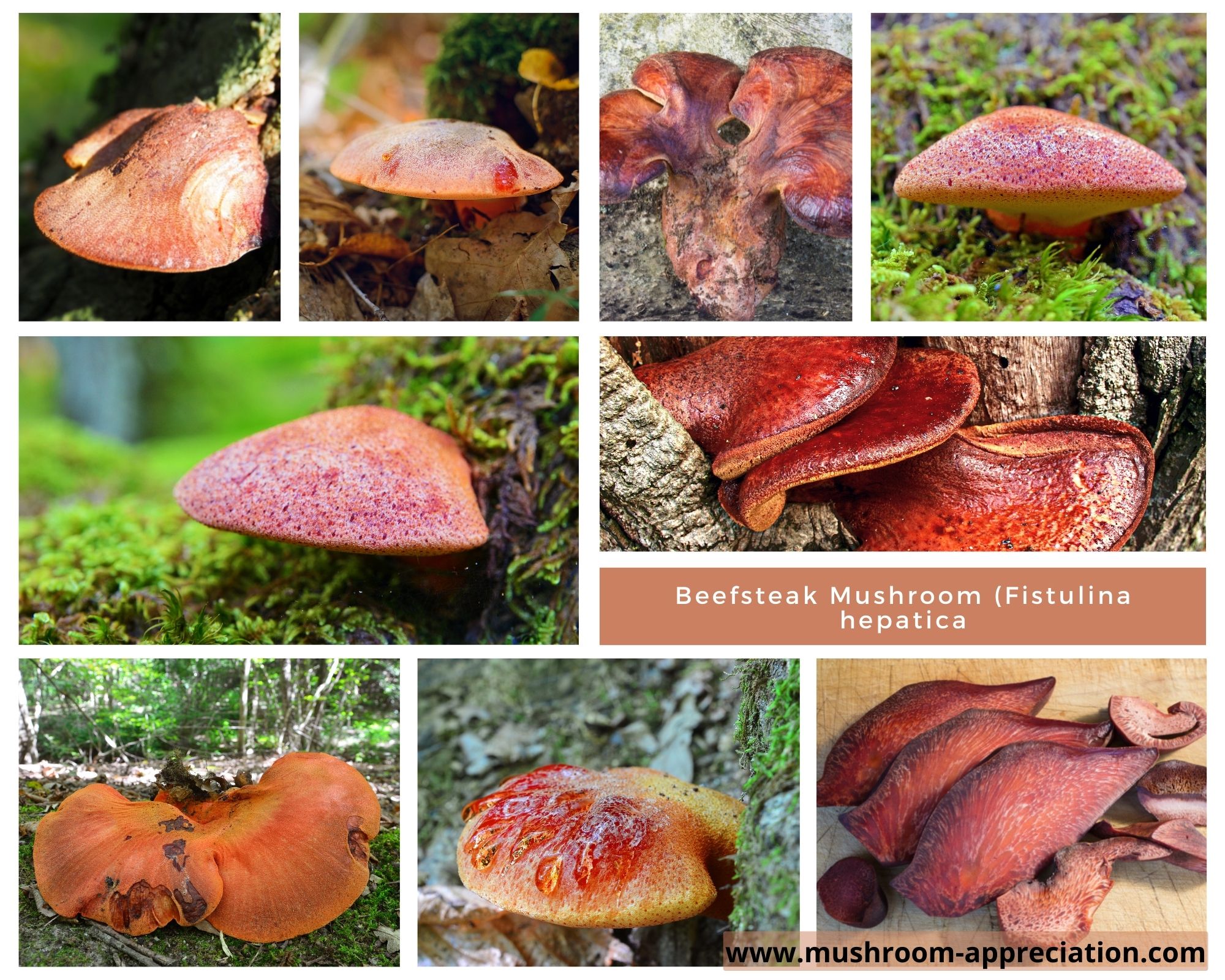





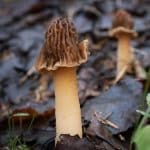
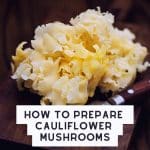
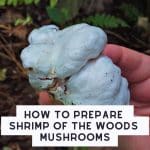
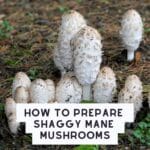
Leave a Reply